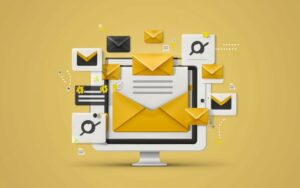Getting the beginning of an email right is crucial, whether you’re reaching out professionally, following up, or introducing yourself to someone new. Knowing how to start an email effectively can set the right tone and help you build rapport with your recipient. This guide will walk you through everything you need to know to create compelling and impactful email openers, with various examples, styles, and considerations for different situations.
Why Does the Start of an Email Matter?
The way you begin an email influences your recipient’s perception of you and determines the tone of the entire communication. An effective opener not only grabs attention but also conveys professionalism and clarity. When you understand how to start an email, you improve the chances of your email being read and responded to promptly, making your communication efficient and purposeful.
How to Start an Email: Different Approaches for Different Situations
Starting an email requires adapting to the context and the relationship you have with the recipient. Let’s explore a few approaches that can help:
1. Formal and Professional Email Starters
When emailing clients, employers, or people you don’t know well, a professional approach is essential. Some appropriate openers for professional emails include:
- Dear [Name] – This is a safe choice for professional emails, especially in formal contexts.
- Hello [Title/Name] – Useful for more relaxed but still professional contexts, like following up with a contact.
- To whom it may concern – A last-resort option, used when you don’t know the recipient’s name.
In professional contexts, addressing the recipient directly with their name (if known) is usually best. It shows respect and sets a personalized tone.
2. Casual and Friendly Starters for Colleagues and Peers
For people you communicate with regularly, like colleagues or familiar contacts, you can use more casual language:
- Hi [Name] – A friendly but respectful way to start an email to colleagues or team members.
- Hey [Name] – Ideal for casual settings, especially within close-knit teams.
- Good morning/afternoon [Name] – Appropriate when checking in or sending updates.
Choosing a more relaxed greeting for familiar recipients builds rapport while keeping the tone light and approachable.
Best Practices for How to Start an Email
To improve the impact of your email openers, follow these best practices:
1. Always Use the Recipient’s Name
Starting with the recipient’s name makes an email feel personal and shows that you’ve considered the person you’re addressing. Avoid generic openings in most cases, as they can make an email seem impersonal or automated.
2. Get to the Point Quickly
After the initial greeting, your first line should quickly introduce the purpose of the email. Keep it simple and direct; the sooner the reader understands your intention, the more likely they are to stay engaged.
3. Match the Tone to the Context
Think about your relationship with the recipient and match the tone accordingly. For instance, an email to a potential client should be more formal than an email to a team member.
4. Avoid Overused Phrases and Clichés
Phrases like “I hope this email finds you well” are often overused and can feel insincere. Instead, try a fresh approach, like expressing genuine interest or diving into the email’s main point more directly.
Examples of How to Start an Email Based on Context
To understand how to start an email effectively, it helps to see specific examples based on different situations:
Reaching Out to a New Contact
- Subject: Introduction to Discuss Collaboration Opportunities
- Start: “Dear [Name], I hope you’re doing well. I’m reaching out to introduce myself and explore potential collaboration opportunities.”
This approach establishes the purpose right away, making it clear why you’re contacting the recipient.
Following Up After a Meeting or Event
- Subject: Following Up on Our Recent Discussion
- Start: “Hi [Name], It was great meeting you at [Event]. I wanted to follow up on our conversation and see if you had any further questions or insights.”
This opener reminds the recipient of your connection, making them more likely to respond.
Cold Outreach for a Sales or Networking Email
- Subject: Exciting Opportunity to Enhance Your Business
- Start: “Hello [Name], I came across your business and thought you might be interested in exploring ways we can help drive your growth.”
By directly addressing potential value to the recipient, this start piques interest in the email’s content.
Sending a Thank You Email After an Interview
- Subject: Thank You for the Opportunity
- Start: “Dear [Interviewer’s Name], Thank you for the opportunity to discuss the role at [Company]. I appreciate the chance to learn more about your team and how I can contribute.”
This opening shows gratitude, a professional attitude, and reinforces the relationship established during the interview.
Common Mistakes to Avoid When Starting an Email
When learning how to start an email, there are a few pitfalls to watch out for:
- Using Overly Casual Language with New Contacts: Starting with “Hey” or “What’s up” can be off-putting if you don’t know the recipient well.
- Skipping a Proper Greeting: Jumping straight into the content without a greeting can make an email feel abrupt or impersonal.
- Overly Long Introductions: Getting to the main point too slowly may lead to the recipient losing interest, so keep it concise.
Pros and Cons of Different Email Starters
Understanding the pros and cons of various email starters can help you choose the right one for each situation.
| Email Starter | Pros | Cons |
|---|---|---|
| Dear [Name] | Professional, safe choice | Can feel overly formal in casual settings |
| Hello [Name] | Friendly but professional | May feel vague if not personalized further |
| To whom it may concern | Useful when the recipient is unknown | Impersonal and generic |
| Hi [Name] | Approachable and friendly | Too informal for formal introductions |
| Good morning/afternoon [Name] | Warm, polite | Limited to specific times of day |
Myth Busters: Debunking Common Beliefs About How to Start an Email
Myth #1: Always Use “Dear” for Professional Emails
While “Dear” is commonly used, it’s not always necessary in every professional setting. For familiar contacts, “Hello” or “Hi” may be more appropriate, keeping the tone friendly yet professional.
Myth #2: It’s Fine to Skip Greetings if You’re Busy
Even if you’re pressed for time, a greeting adds warmth and professionalism to an email. An abrupt start can make an email seem too transactional, potentially diminishing engagement.
Myth #3: You Need to Include a Polite Opening Phrase
Using phrases like “I hope you’re well” isn’t required in every email. Instead, prioritize relevance and clarity; dive into your main point if you’re short on time.
Related Resources for Mastering Email Etiquette
For more tips on professional email communication, check out these articles:
- Email subject line for reaching out – Tips to craft attention-grabbing subject lines for outreach emails.
- Thank you email after interview subject line – Perfecting subject lines for follow-up and thank-you emails.
- How to put a GIF in an email – Learn how to add a visual touch to your emails.
- What does PS mean – Discover how to use “PS” effectively in emails.
- Best subject line for rejection email in 2024 – Ideas for tactful rejection email subject lines.
- How to recall an email in Outlook – Retrieve emails in case of mistakes or last-minute changes.
- Networking email subject line – Subject line ideas for expanding your professional network.
Final Thoughts on How to Start an Email
Knowing how to start an email is a skill that enhances your communication, setting the stage for effective interaction. Whether you’re writing to a new contact, following up, or reconnecting with an existing connection, a well-crafted opening shows respect, builds rapport, and encourages engagement. Using the right greeting and following best practices ensures your emails are professional, clear, and impactful.
Take these techniques and try them in your next emails; you’ll likely notice an improvement in response rates and overall communication quality. Starting an email effectively isn’t complicated, but it does make a big difference in how your messages are received.




